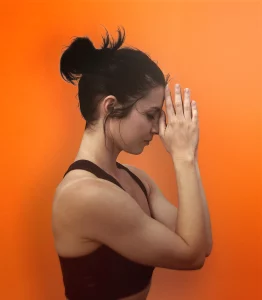As the COVID-19 pandemic has surged and changed our ways of living, it is more important now than ever to understand the function of breath on our everyday wellness level. Women have been burdened and forced to adapt to quarantine quickly. With a busy mind and an anxious heart, limited lung capacity can lead to complications from COVID-19 infection. One way to fight back is to re-learn the primary essence of life and this the breath.
As a healthcare leader specializing in women’s health, I have set out to find nonmedical treatments that I can offer my patients to help retain their health integrity and, more importantly, their wellness and resilience against this pandemic. Yoga is an example of a wellness practice that encompasses mental, physical, and spiritual rituals that may benefit women’s health during these times. One of the primary teachings of yoga is breath control.
Yoga classes may vary by instructor, type, length in time, but there is one crucial physical action that remains the same, and it is the attention to the present moment. In doing this, the ability to calm the mind and generate a sense of control is vital to reduce toxic stress. The breath helps to create heat in the body and thereby increase necessary lung capacity, another great way to help mitigate the effects of COVID-19. Yoga offers a healing touch to the ailments brought on by this biological disaster.
There are different breaths taught during yoga practice; we will briefly review the two most commonly encountered. The Ujjayi breath, known as victorious breath, mimics the ocean sound. This breath comes from our vocal cords; the mouth stays closed and slightly constricted as you inhale and exhale. This breath helps to connect you with your movement. The Ujjayi breath can be your tool during times of needed courage, strength, or resilience. Next time you feel anxious or nervous, remember your victorious breath as it triggers your vagus nerve and calms your central nervous system.
The other most frequently used breath is viloma breathing or alternate nostril breathing. Viloma breath can be used during times of needed calm such as insomnia, stress relief, or to quiet the mind in preparation for seated meditation. This breath begins with using your right thumb over your right nostril as you deeply inhale with your left and then using your index finger to close the left nostril. Repeating through each nostril 3-5 cycles.
The anatomy behind the inhale and exhale involves the contraction and relaxation of the diaphragm, lungs, ribs, and heart. By working in unison, the breath brings calm and relaxation to the mind, awakening the soul, and allowing the spirit to regenerate itself. This practice is one to cherish and put into your arsenal of self-care during this pandemic.







